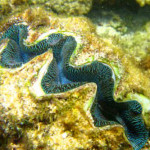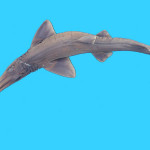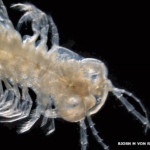Tag Archives: new species

New Species of Tridacna Giant Clam
A new species of Tridacna clam has been discovered in the Info-pacific region. The clam has yet to be scientifically described and does not yet have a valid name.
The new clam was discovered when Jude Keyse, a postgraduate student at the University of Queensland, Australia and the other co-authors of ”A Novel Widespread Cryptic Species and Phylogeographic Patterns within Several Giant Clam Species (Cardiidae: Tridacna) from the Indo-Pacific Ocean” started to DNA test clams near the Solomon Islands and at Ningaloo Reef in Western Australia. The results shows evidence of a new clam that has been hiding in plain sight. The new species is believed to be very closely related to Tridacna maxima.
Another co-author, Shane Penny, a postgraduate student at Charles Darwin University., had the following to say about the discovery “To correctly describe the new species now becomes critical as the effects of getting it wrong can be profound for fisheries, ecology and conservation,”
Bibliographic information: Huelsken T et al. 2013. A Novel Widespread Cryptic Species and Phylogeographic Patterns within Several Giant Clam Species (Cardiidae: Tridacna) from the Indo-Pacific Ocean. PLoS ONE 8 (11): e80858; doi: 10.1371/journal.pone.0080858
Image credit: E. A. Treml.

New species of saw shark – Pristiophorus lanae – Lana’s Sawshark
This isnt really aquarium related but if you are anything like me than you will get excited whenever you see a new sawfish or shark. With this is mind this is perfect. A new Species of sawshark have been discovered and scientifically described. The new species will be known as Pristiophorus lanae and can be found in the western North Pacific. Continue reading

New venomous remipede species discovered, Speleonectes tulumensis
A new venomous species of remipede, Speleonectes tulumensis, has been found and described by science. The new species is the first venomous crustacean and have a venom similar to that found in rattlesnakes.
The new species of remipede seems to have a wide distribution and has been observed in underwater caves located in the Caribbean sea, around the Canary Islands, and off Western Australia. Further research might reveal that this is actually several very similar species.
The species is blind and found in dark caves.
The remipede use its venom to hunt and kill its prey. They mainly feed on other crustaceans. The venom kills the prey and liquifies the soft tissue allowing the remipede to consume it by sucking it out of its prey much like a spider do on land.
Dr Ronald Jenner, a zoologist at London’s Natural History Museum and a co author of the research paper introducing the remipede comments on the discovery by saying:
“The unique insights from this study really help improve our understanding of the evolution of animal venoms.
The spider-like feeding technique of the remipede is unique among crustaceans. This venom is clearly a great adaptation for these blind cave-dwellers that live in nutrient-poor underwater caves.” ..
The discovery was made of a team of scientists consisting of
- Björn M. von Reumont
- Alexander Blanke,
- Sandy Richter,
- Fernando Alvarez,
- Christoph Bleidorn,
- Ronald A. Jenner
and was presented in the research article:
The first venomous crustacean revealed by transcriptomics and functional morphology: remipede venom glands express a unique toxin cocktail dominated by enzymes and a neurotoxin
Mol Biol Evol (2013) doi: 10.1093/molbev/mst199
If you want to know more you can find the research paper in the Oxford journal of Molecular Biology and Evolution.